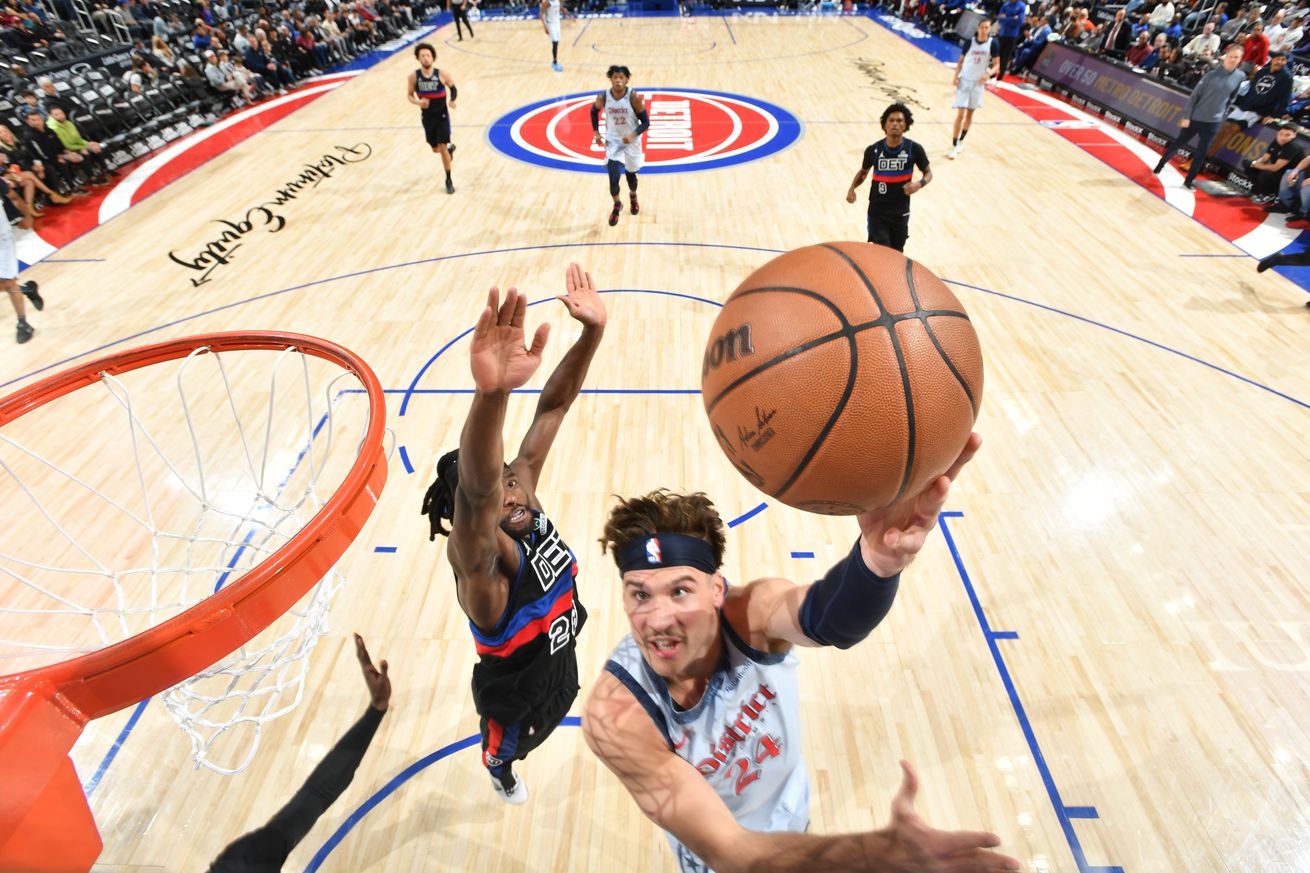
No doppelgangers, just analysis
I was about to get started writing what I thought would be a fun piece about Corey Kispert’s statistical doppelgangers. I figured The Machine would spit out a list of good shooters, and it does. But I kept getting stuck on some of the narratives about Kispert that…well…don’t hold up under scrutiny.
The biggest of these is that of Kispert’s improvement. The Official Narrative is that he’s gotten better. Except…he hasn’t. Here’s his progression year by year, according to my PPA metric.
(PPA is my all-around rating system that rewards players for doing things that help a team win and dings them for things that hurt the cause. It’s pace neutral and includes accounting for role and defensive impact. In PPA, 100 is average and higher is better. Replacement level is 45.)
- 2021-22 — 87
- 2022-23 — 95
- 2023-24 — 80
- 2024-25 — 57
You’ll find something similar using other metrics with slight differences. John Hollinger’s PER, for example, rates Kispert’s rookie year as his worst and his third year as his best, but a) rookie year and last season were about the same (10.9 PER vs. 11.0), and b) PER rewards inefficient usage. Year three was Kispert’s high-water mark in possession usage.
Other advanced metrics (RAPM, DARKO, LEBRON, MAMBA) show a neutral to modestly positive contribution on offense and a significantly negative defensive impact.
We see the same when looking at the numbers on a per possession basis. Kispert’s rebounds, assists, steals, and blocks have bounced within a narrow range for four seasons. His turnovers have ticked up (though not egregiously) as his usage has risen.
His offensive efficiency has been meh except for year two — his offensive rating was about +2 per 100 possessions compared to league average as a rookie, -1.3 per 100 in year three, and -2.5 per 100 last season. The one exception: year two, when is offensive rating was +9.2.
Drafted as a three-point marksman, Kispert’s three-point shooting has been decent but unexceptional…except for year two (42.4%) and kinda year three (38.3% vs. a league average of 36.6%. Last year, he shot 36.4% — league average was 36.0%.
I had accepted the narrative that Kispert had improved as a driver, but the numbers don’t agree. Last season, at-rim attempts became a bit less frequent in his shot diet (20.0% of his FGA in 2023-24 down to 18.9% last season), and his at-rim conversion rate fell to a career low (but still excellent) 72.9%.
In other words, Kispert does a good job of converting when he’s able to get to the rim, but he seldom does. He also experienced a dropoff in floater range conversion rate (46.6% last season vs. 50+% each of the previous three, but he took more of them. That 3-10 foot range is the place of dead or dying drives — a player has attacked, can’t get to the rim, and has to put up something. That something is often heavily contested, often by a big, and those are tough shots for nearly everyone, including Kispert.
Elite players often draw fouls in this area. That’s not Kispert, however. He’s an excellent free throw shooter, he just doesn’t stress the defense enough to get to the line with any regularity.
Another (partially true) narrative that needs some nuance is the (repeated) assertion by chief propagandist play-by-play guy Chris Miller is that Kispert is a great cutter.
Last season, NBA tracking data had Kispert as a cutter 0.7 times per game, which was about 6.6% of his possessions. In other words, a Kispert cut that led to finishing a play happened about once every six quarters. Those cuts produced nearly 1.5 points per possession, which ranked in the 83rd percentile.
The point? Kispert is an effective cutter…when he cuts, which is actually pretty rare. I’m ready to believe that he could be a more frequent cutter with the right teammate (it’d be cool to see him with Nikola Jokic or Lebron James and Luka Doncic or with a healthy Tyrese Haliburton). But a cut every six quarters? That doesn’t scream “greatness” at that particular aspect of his game, especially when his cut frequency is basically right at the team average, and his reputation as a shooter should lead to defensive overplays and more cutting opportunities.
Where does all this leave the Wizards? If Kispert is going to survive as a shooting specialist — and based on his performance thus far, that’s what he’ll need to do — he needs to make more threes. Last season, nearly a third of his three-point attempts were wide open, and he shot just 37.5%. On open looks: 37.9%. That’s not good enough to create the defense-distorting three-alarm fire that creates openings for teammates.
The rest of his game hasn’t improved in a meaningful way through four seasons and isn’t likely to take a big leap forward in the years ahead. That is to say, he’s not about to become an impactful defender, a strong rebounder, or a stellar playmaker. He might shoot better and generate more opportunities to attack closeouts — exactly the kind of thing that becomes more probable if he’s with better teammates.
Given his age (entering his age 26 season), and that he’s starting a contract paying him nearly $14 million per season, the best hope for the Wizards is that he starts the season hot (40+% from three) and entices a team to trade a first round pick to add him to their rotation.
